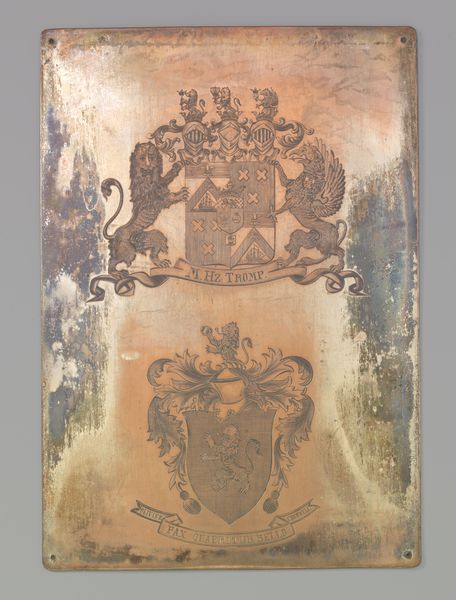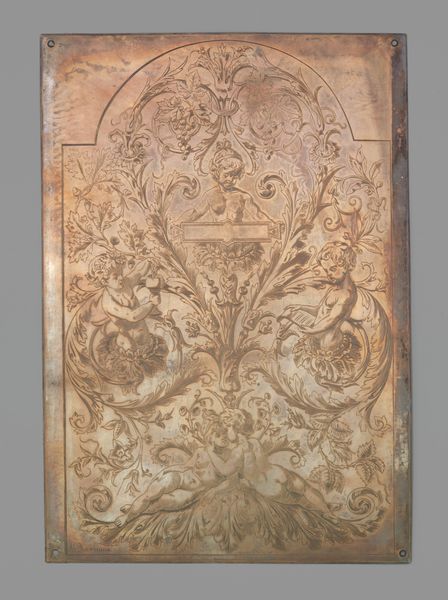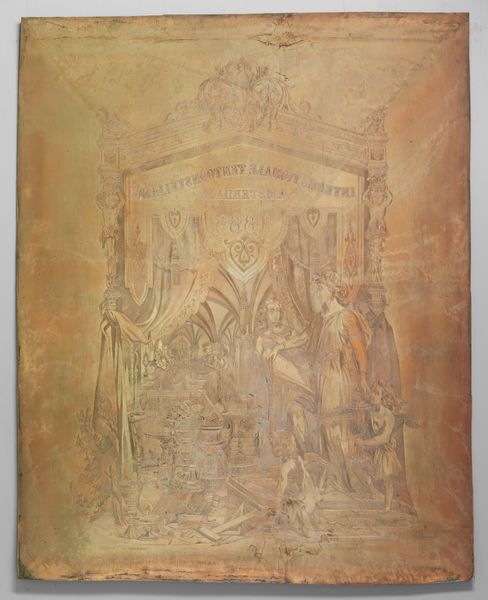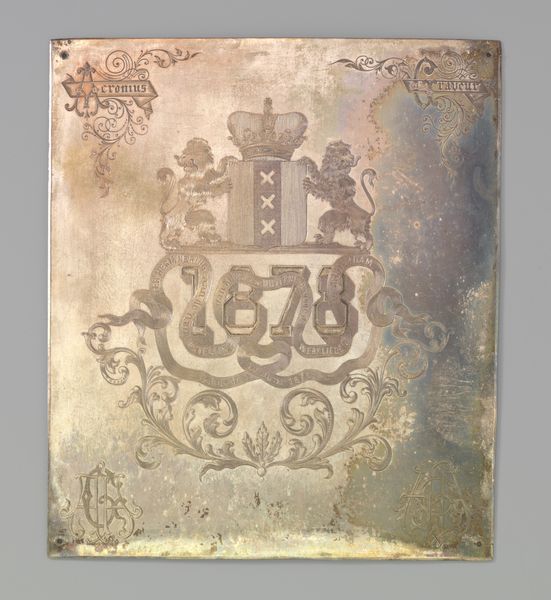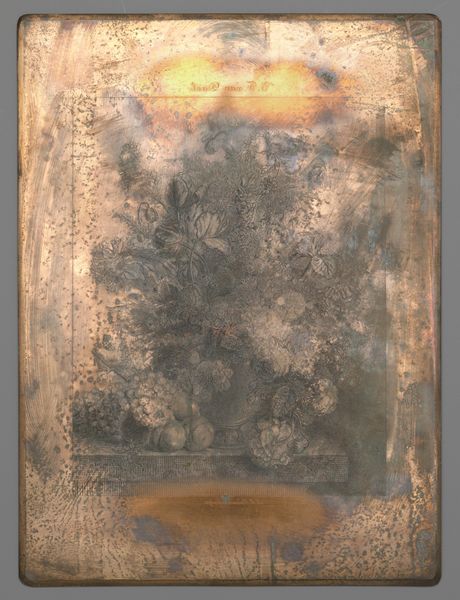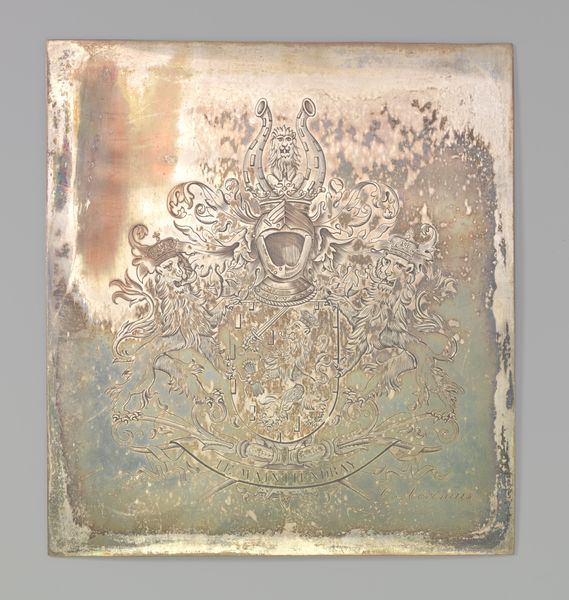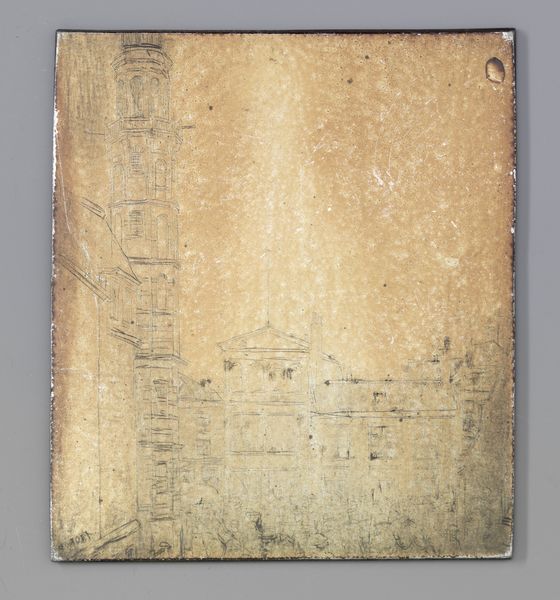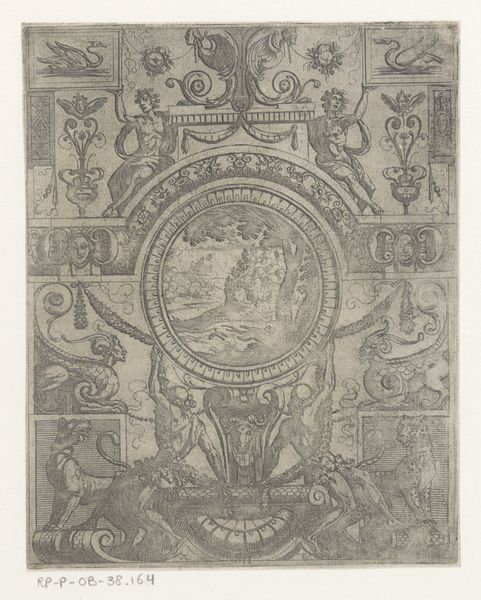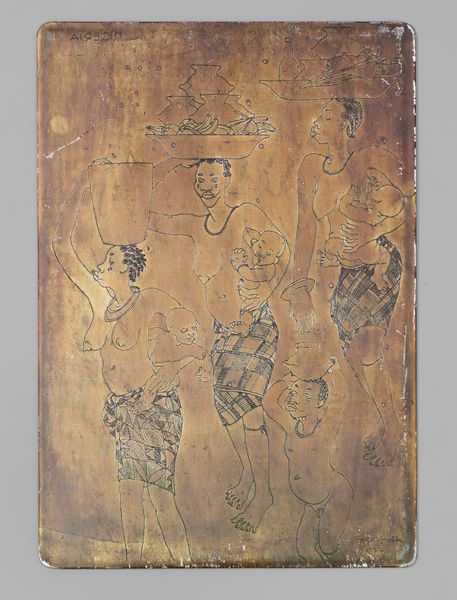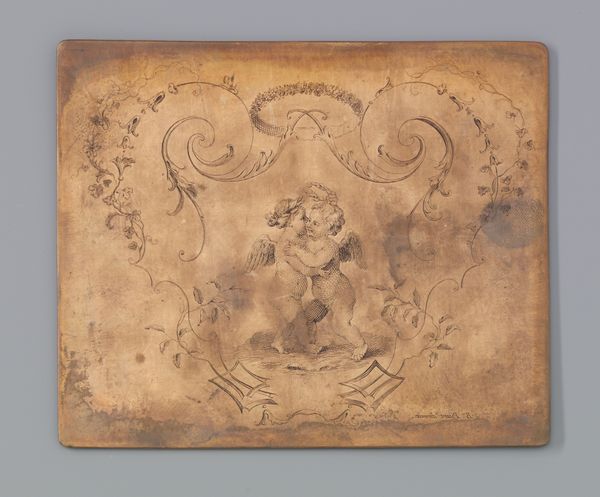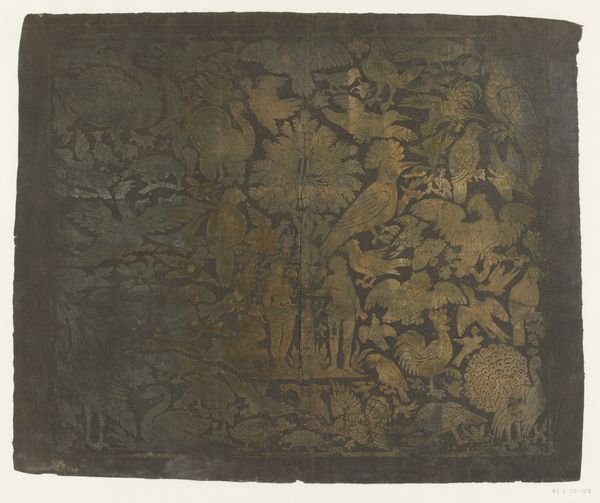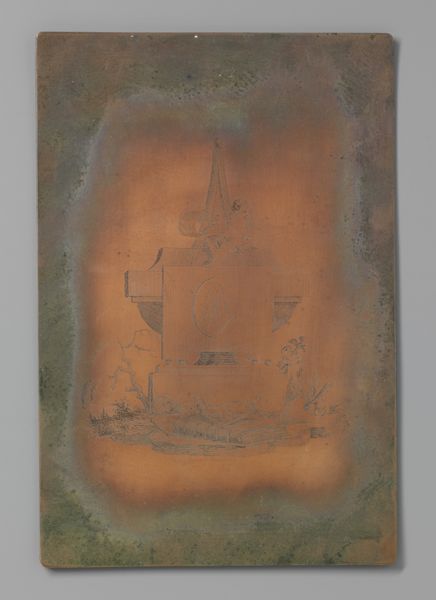
print, metal, engraving
#
portrait
#
medieval
# print
#
metal
#
coloured pencil
#
history-painting
#
engraving
#
mixed media
Dimensions: height 234 mm, width 193 mm
Copyright: Rijks Museum: Open Domain
Editor: We're looking at "Wapens van Johan Oldenbarnevelt, Maarten Luther en Johan de Wit," created sometime between 1900 and 1930, using engraving and other media on metal. The heraldic imagery gives it a formal, almost somber air. How do you read this piece? Curator: Note the meticulous execution. The engraving is remarkably precise, producing a sophisticated arrangement of lines, and notice the layering of textures across the metal support. Consider also how the surface interacts with the light, subtly revealing or obscuring the symbols. Editor: So you're focusing on the physical presence, not so much the historical figures represented? Curator: Precisely. Observe the strategic placement of the coats of arms. They create a visual hierarchy that demands our attention and suggests particular relations and affinities between these historical actors. Note also the lines emanating outwards from each emblem that suggest radiating authority. Does it also appear this way to you? Editor: I hadn't noticed that initially, but I see how the radiating lines create an implied connection, a certain flow and rhythm across the plane. It is quite powerful. Curator: Indeed, by concentrating on its internal logic, its formal construction, and its interplay of signifiers, we reveal how the image itself conveys significance. We perceive then a matrix of symbols arranged carefully. What final observations would you offer? Editor: I suppose focusing on form really isolates the intent behind choices of presentation – something easily missed focusing on subject matter. It adds a new dimension of awareness. Curator: Exactly. Close examination of line, texture, and composition elevates our appreciation and reveals that art operates not only in cultural or historical fields, but primarily through vision.
Comments
No comments
Be the first to comment and join the conversation on the ultimate creative platform.
